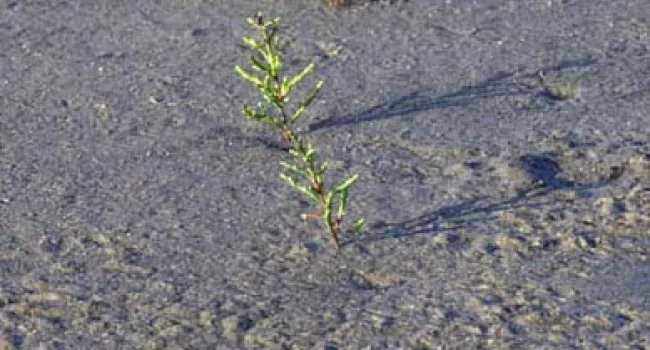
Photo
There are two species of glasswort. One is an annual and lives only for one year, then dies. It is the taller, branched plant farthest out into the salt flat. The other is a perennial and lives for...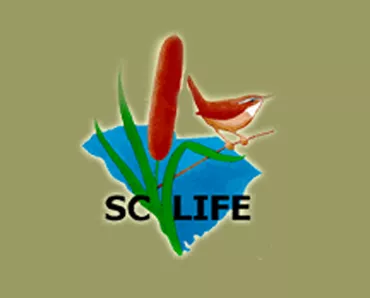
Take a virtual field trip to a South Carolina cove forest and a salt marsh. These virtual field trips were produced in collaboration between Clemson University's SC LIFE Project and South Carolina ETV. The virtual field trips were designed specifically for schools lacking easy access to natural areas.
The SC LIFE Project, supported by an award to Clemson University from the Howard Hughes Medical Institute Undergraduate Science Education Program, uses the natural history of South Carolina (and the Southeast) to illustrate basic biological concepts and to stimulate inquiry-based learning. The SC LIFE Program serves elementary, middle and high school students and teachers. The target grade level of the SC LIFE Virtual Field Trips content is middle school.
SC LIFE materials are available for use only in non-profit educational activities. Any other uses, including activities involving fees for instruction and/or materials, must receive permission from the SC LIFE Project Director. Contact SC LIFE Project Office, 132 Long Hall, Clemson, SC 29634, 864-656-4224, with questions about any of our SC LIFE materials or programs.

Photo
There are two species of glasswort. One is an annual and lives only for one year, then dies. It is the taller, branched plant farthest out into the salt flat. The other is a perennial and lives for...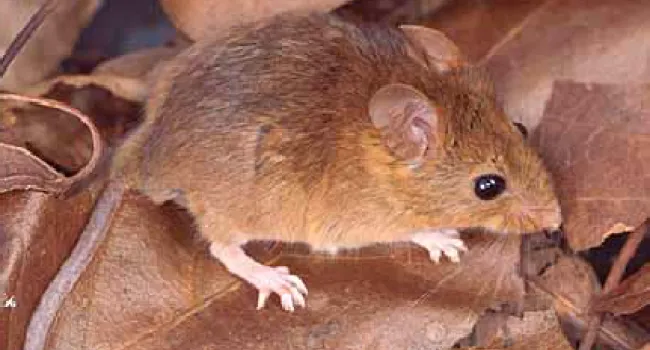
Photo
(Ochrotomys nuttali) This rodent is one of the most beautiful of our native mice. A light to brilliant orange-gold fur is characterstic of the adults. This mouse uses shrubs and vines as a serial...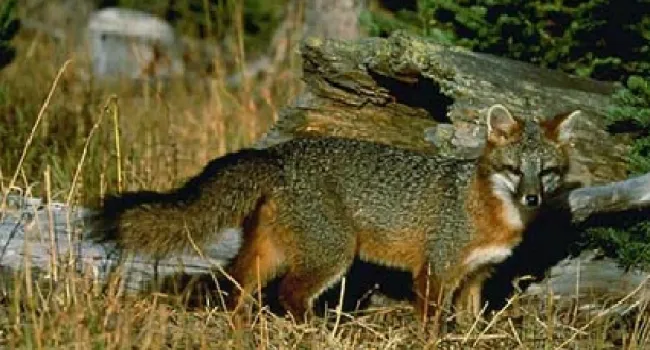
Photo
(Urocyon cinereoargneteus) This fox is widely distributed and associated with decidous forests. The gray fox is an omnivore and will eat fruit, insects and small mammal prey items. This is the only...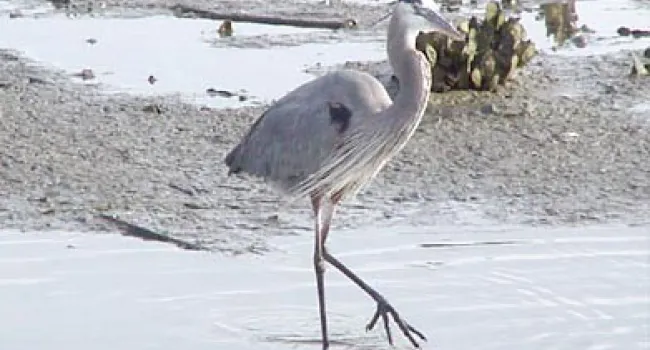
Photo
Great blue herons are the largest of our herons. Standing over 3 feet tall, with a large, 6-inch-long dagger of a beak, they eat anything they can spear. They are bluish-gray in color. They most often...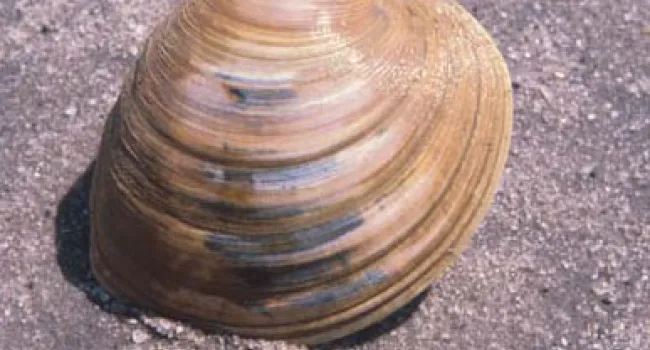
Photo
The hard clam, or quahog, is common along our coast. The clams are sold commercially as littleneck, cherrystone, or chowder clams, depending on size, with littlenecks about an inch in diameter and...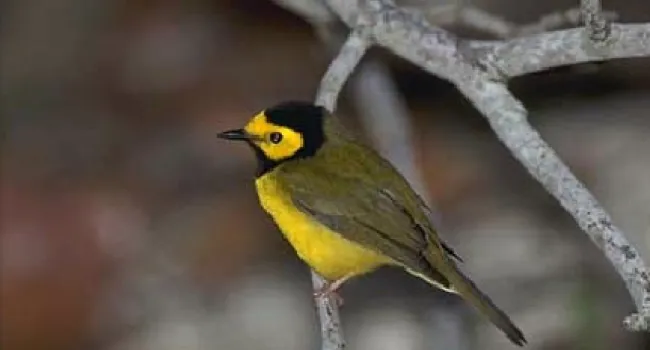
Photo
(Wilsonia citrina) These warblers are common in the moist hardwood forests of the southeast. Their feeding activity is usually concentrated in the understory bushes. They consume insects on the ground...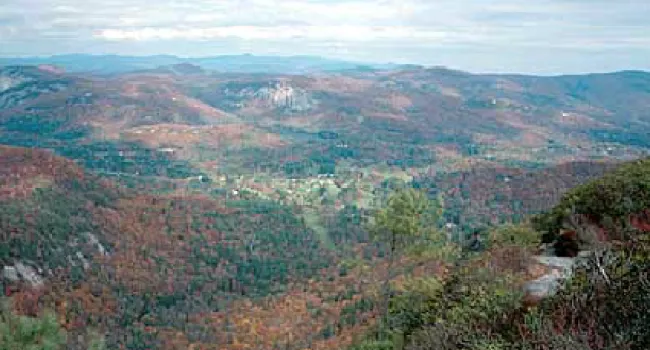
Photo
A current threat to cove forests is residential development. Steep slopes are cleared, and homes, condominiums and resorts are built.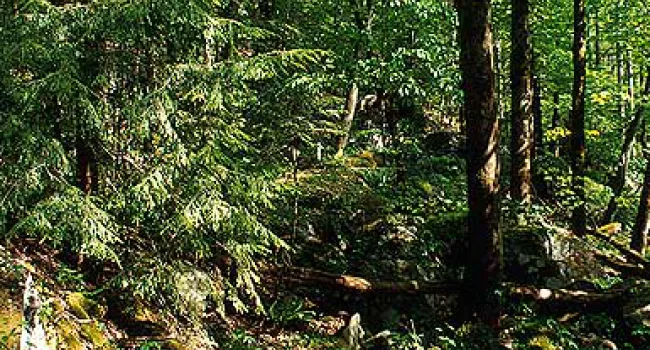
Photo
Steep slopes and a dense canopy of deciduous tress obscure the sun. As a result, the florest floor tends to be in deep shade for most of the year.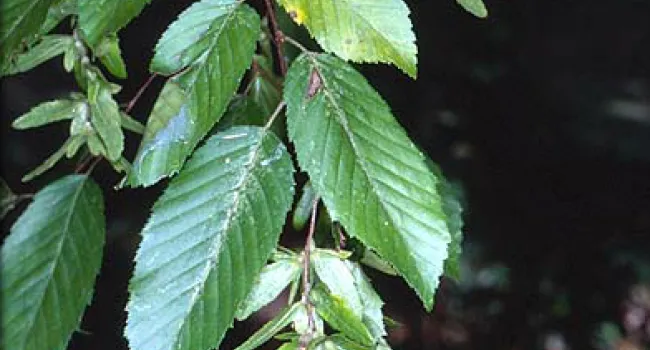
Photo
(Carpinus caroliniana) This slow-growing understory tree occurs along streams and in moist bottomland forests. Its wood is extremely hard and was used in the past for golf club heads, mallets and tool...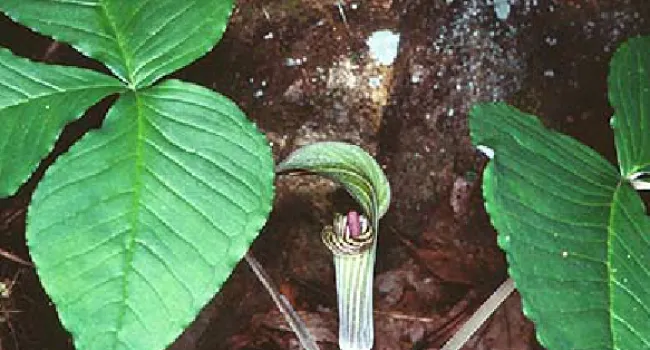
Photo
This unusual plant produces one or two leaves, each of which is divided into three leaflets. A cluster of tiny flowers is produced at the base of the striped tubular structure (called a spathe) that...